Expert advice: X-Men concept star Maciej Kuciara
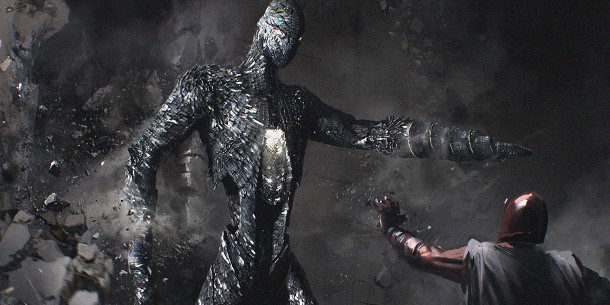
In the run up to his Gnomon Master Class, the creator of Days of Future Past’s deadly Sentinels tells us about his work, his favourite hidden tool in Photoshop – and why junking half your images will make you a better artist.
Concept artist Maciej Kuciara straddles the worlds of videogames and film. Currently employed at game developer Naughty Dog, and formerly lead concept artist on Crysis 2, he also works on blockbuster movie projects like X-Men: Days of Future Past, for which he designed the deadly mutant-hunting Sentinels.
This month, Maciej will be revealing the workflows he has developed over a decade’s experience in the industry in Environment Design for Film, his session for Gnomon Master Classes 2014: the Gnomon School of Visual Effects’ series of interactive online workshops, which take place from 23 June to 6 July. In the run up to the classes, we caught up with Maciej to discuss his workflow, his technical tips, and his advice for young artists.
CG Channel: Isn’t ‘Environment Design for Film’ an odd topic for someone from Naughty Dog?
Maciej Kuciara: Even though I’m currently a full-time employee at Naughty Dog, over last few years, I have had the opportunity to work on several films, including the upcoming blockbusters Guardians of the Galaxy and the Wachowskis’ Jupiter Ascending – plus a few more that I can’t talk about just yet.
Since I have experience in working for both film and games, I felt that topic of environment design in film would be little more creative and art-focused. Videogames have more departmental dependencies, where designs can easily – and quite often are – heavily influenced by their gameplay.
CGC: So what will you be covering in your Master Class?
MK: Techniques and workflows I personally use while working with film production designers – from quick thumbnail sketches to fully rendered illustration. I will also cover how to use 3D to create quick set designs that can later be finished with digital painting and photobashing techniques.
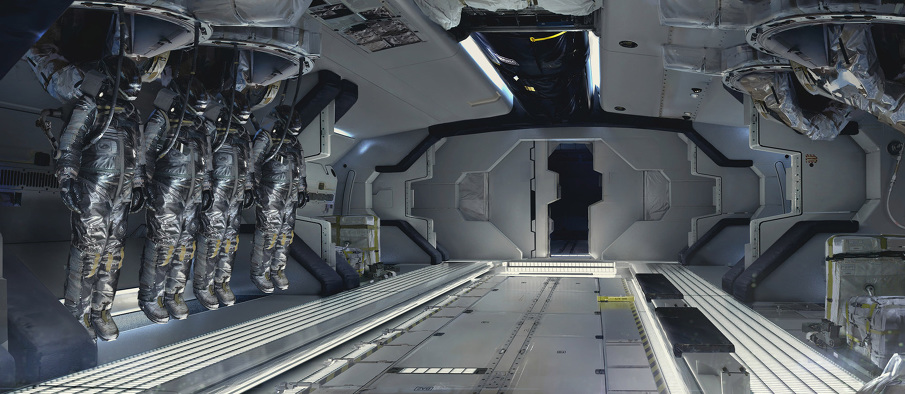
Space Corridor: a personal piece showing a futuristic space station environment. Maciej will be discussing his environment art workflow in his upcoming online workshop at Gnomon Master Classes 2014.
CGC: What do you gain by starting in 3D, instead of working purely in Photoshop?
MK: Starting with 3D is just one of many ways to go about the environment designs, but what makes it particularly useful is the flexibility it offers. It makes it easy to iterate things like camera angles and lighting directions early, without the need to start from scratch each time.
Photoshop is almost mandatory for folks who would like to do concept design or illustration, but 3ds Max became my 3D package of choice mainly because of how good its tools are for hard-surface modelling, and how much I like the render quality offered by V-Ray. I also use Modo and ZBrush.
CGC: Name an underrated tool in one of those packages.
MK: Match Color in Photoshop. Play around with it.
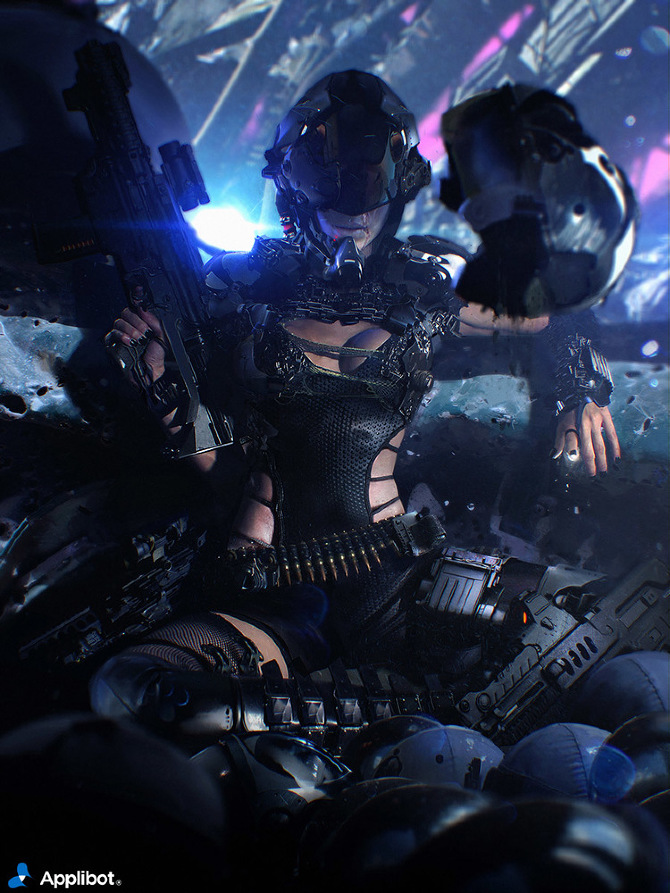
An image created for Applibot for the Galaxy Saga trading card game. Maciej’s character work feeds into his environment concepts, particularly for keyframe paintings and story illustrations.
CGC: As well as environments, you do amazing character designs. Does one influence the other?
MK: Sometimes. Apart from establishing genre and style, characters heavily influence the storytelling of the illustration. They might not be as important for set design purposes, where they’re typically used to show the scale of objects, but they definitely have an impact on what the surroundings look like in keyframe paintings.
CGC: Is it easier to get hired if you specialise in one or the other – or is it better to be versatile?
MK: Versatility gives you more work; specialising might give you cooler stuff to work on. If you’re really good at sci-fi vehicles, for example, you might end up designing some major props for a film or game; while if you’re versatile, you will more often end up doing illustrations based on other artists’ designs.
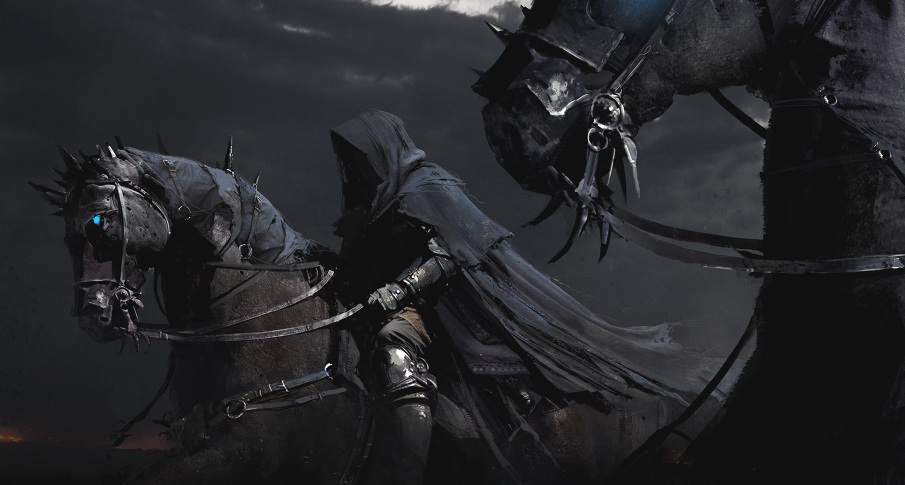
Dark Riders: a personal exercise in exploring cinematic lighting and blending photographic textures with hand painting. The image took seven to eight hours to create: mainly “tinkering and nailing the spotlight-alike look”.
CGC: What’s the best piece of career advice you’ve ever been given?
MK: Work real hard. And I mean real hard. My good friend Dan LuVisi once said (repeating his dad’s words, I believe), that every single hour you’re away from your craft, someone else is getting better than you.
On the other hand, Virginie Bourdin, MPC’s art director on X-Men: Days of Future Past, said once that artists are like athletes, expected to perform on the highest levels. But in order to maintain those levels, there has to be a good balance of training versus resting. Don’t let your health suffer, or let your family feel left out.
CGC: What’s the most common mistake young concept artists make?
MK: Being a follower instead of a leader. Followers copy other artists’ styles, or ideas, or both. Leaders set up trends that get everyone else inspired. It’s fine to be a follower from time to time – to practice, or to find your own avenues. But settling on just being a copycat won’t get you far. Most artists that I see as leaders never look for work. They get enough to be picky. Followers usually have to look for jobs.
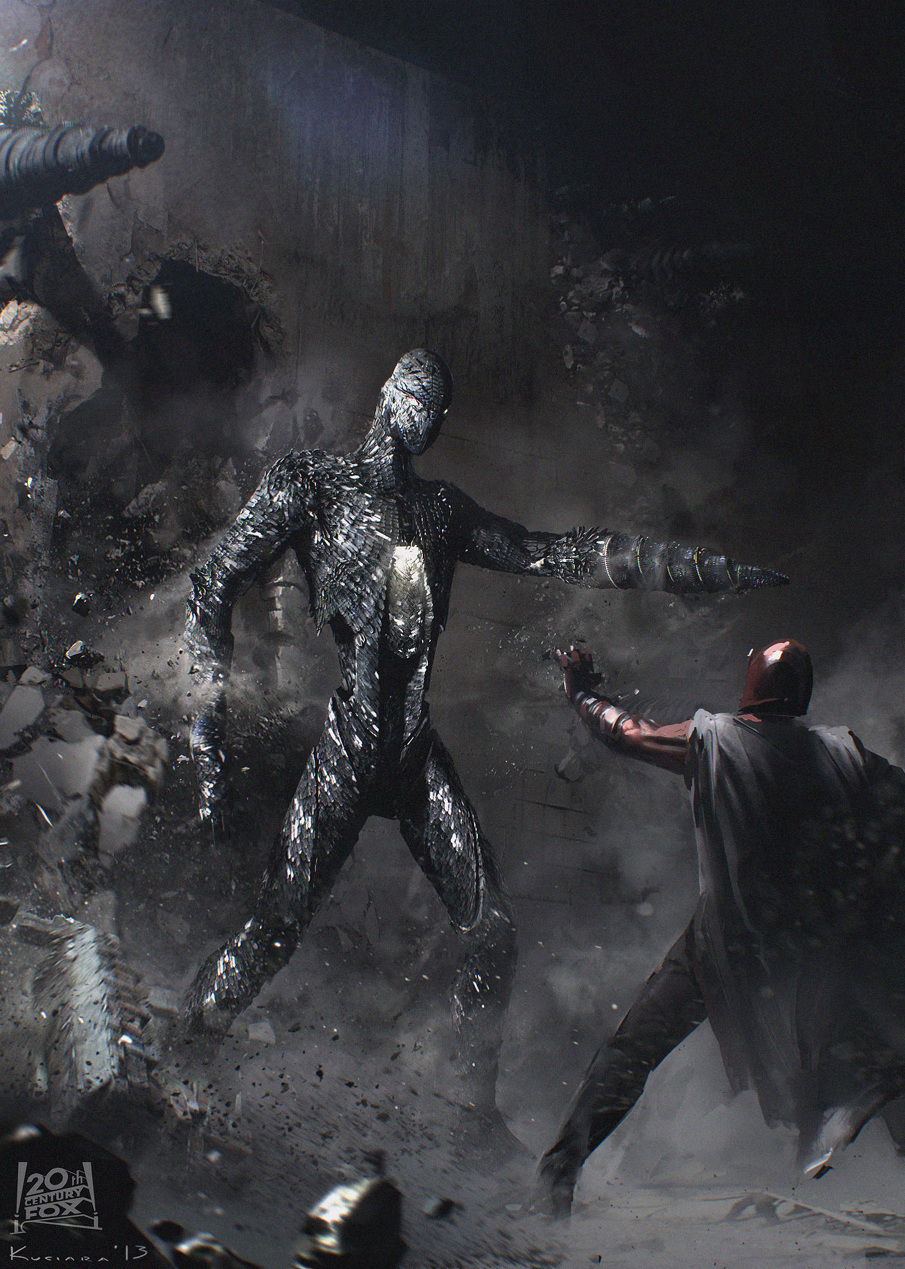
Concept art for the Sentinels: the deadly mutant-hunting robots from X-Men: Days of Future Past. See how the designs evolved, from early sketches to their on-screen incarnations, on Maciej Kuciara’s website.
CGC: Tell us something about your career that no one else knows.
MK: More than 50% of the work I’ve ever done was so crappy, I had to start again from scratch. That percentage goes down with time until you know you can deliver what is expected from you.
But if you never fail, you never get to fully appreciate success. Failure is deeply embedded in the career of every successful artist that I know.
CGC: What part of your working day makes you think: ‘This is why I do this job?’
MK: I don’t think I have those ‘This is why I do this job’ moments. If art is your passion, you have to take both the good and bad parts. When too many projects make you want to make you quit, it usually means one of two things: that your work still sucks and you can’t get better jobs – or that you’re really bad at picking projects. Either way, it’s up to you to do better next time.
Visit Maciej Kuciara’s website
Register for Gnomon Master Classes 2014 ($295 for all 14 sessions)
Full disclosure: CG Channel is owned by the Gnomon School of Visual Effects.
